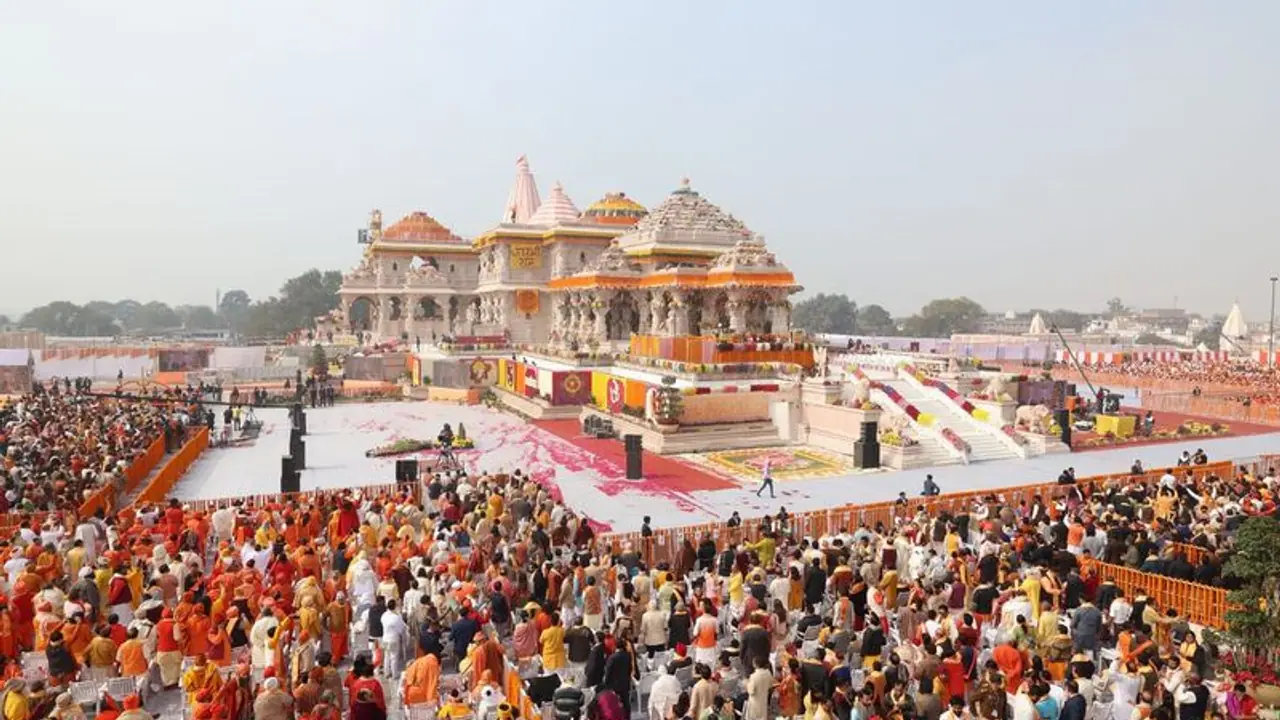The latest addition to the grand Ram temple, the consecrated Ram Lalla idol, is christened "Balak Ram," symbolizing Lord Ram as a five-year-old in a standing pose. Arun Dixit, the priest involved in the consecration, explained the reasoning behind this name.
The newly consecrated Ram Lalla idol in the grand Ram temple has been named "Balak Ram," portraying Lord Ram as a five-year-old in a standing posture. The priest, Arun Dixit, associated with the consecration, shared the significance behind the name and expressed profound emotions upon first seeing the idol on January 18.

The latest addition to the grand Ram temple, the consecrated Ram Lalla idol, is christened "Balak Ram," symbolizing Lord Ram as a five-year-old in a standing pose. Arun Dixit, the priest involved in the consecration, explained the reasoning behind this name.
Arun Dixit, a Varanasi-based priest with extensive experience in consecrations, expressed profound emotions upon first glimpsing the idol on January 18. Describing it as the most divine and supreme consecration he has performed, Dixit couldn't contain his thrill, leading to tears rolling down his face.
The idol was consecrated in a grand ceremony led by Prime Minister Narendra Modi on Monday, signifying the dawn of a new era. The historic event, just months before the Lok Sabha elections, attracted lakhs of viewers who witnessed the 'pran pratishtha' ceremony from their homes and local temples.
The Shri Ram Janmabhoomi Teerth Kshetra undertook extensive research and studied sacred texts like the Adhyatma Ramayana, Valmiki Ramayana, Ramcharitmanas, and the Alavandar Stotram to prepare ornaments for the idol. The meticulous process ensured the idol's embellishments held deep symbolic meaning.
Clad in Banarasi fabric, the idol dons a yellow dhoti and a red 'pataka' or 'angavastram.' The 'angavastram' is adorned with pure gold 'zari' and threads, featuring Vaishnav symbols like 'shankh,' 'padma,' 'chakra,' and 'mayur,' crafted by Ankur Anand's Harsahaimal Shiamlal Jewellers and designed by Manish Tripathi.
The 51-inch idol, chiseled by Mysuru-based sculptor Arun Yogiraj, is crafted from a three billion-year-old rock known as Krishna Shile (black schist). Yogiraj, who devoted sleepless nights to precision sculpting, expressed his gratitude for being chosen for this auspicious task, emphasizing the profound significance of Lord Ram in his life.
Republic Day 2024: Tableaus set to echo 'women empowerment' at Kartavya Path; check details
The Krishna Shile, excavated from Gujjegowdanapura in Mysuru, is a fine-to-medium-grained soapstone, ideal for sculpting idols due to its smooth surface texture. Its azure color and characteristics make it a fitting medium for artists like Yogiraj.
Sculptors Ganesh Bhatt, Yogiraj, and Satyanarayan Pandey crafted the Rama Lalla idols for the grand temple. The temple trust plans to place one in the sanctum sanctorum, while the other two will be situated in different sections of the mandir, showcasing their collective artistic contribution.
